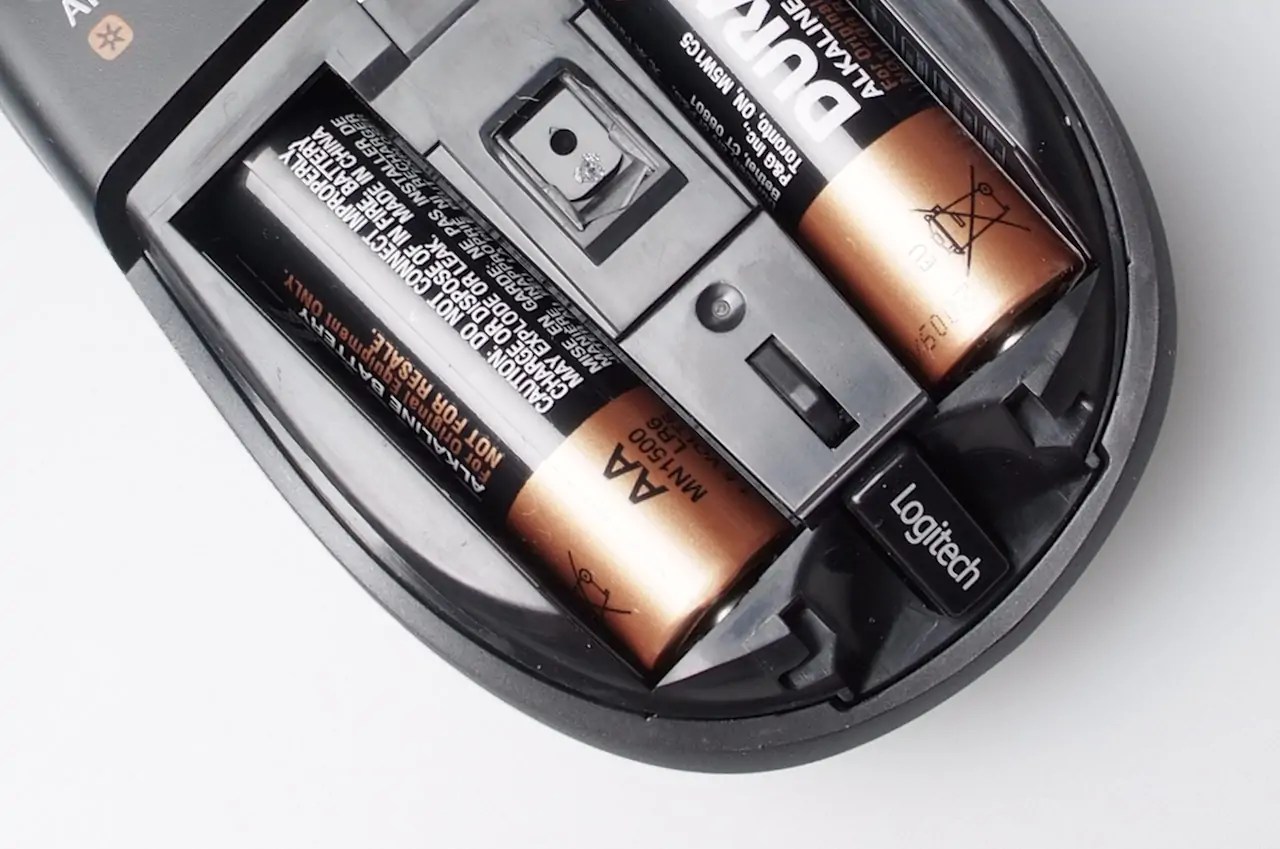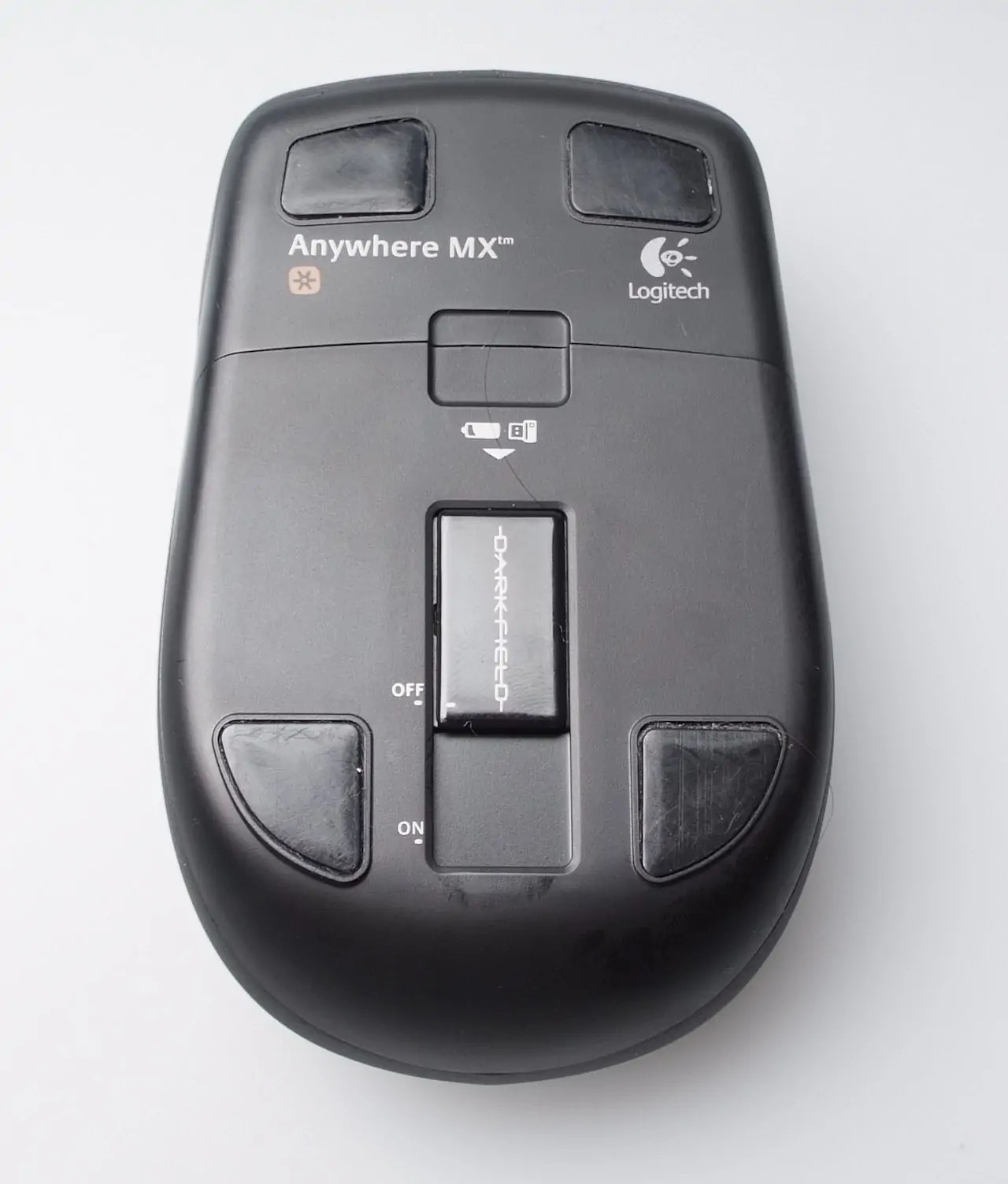Logitech Anywhere MX
This is a long review of a mouse – really! Logitech’s Anywhere MX deserved it
It seems like a lifetime ago that the mouse – a pointing device for computers – was a novelty, and an imperfect one at that. Square boxes with lumpy wheels, strangely shaped devices with no relationship to the shape of the human hand, tiny little round ones… all of these shipped with Apple’s hardware for years.
Third-party manufacturers did their best to keep up with Apple’s novel interpretations of the human hand, but kept on making models that were just too comfortable, too natural.
Logitech’s history with mice is long and respectable. Acting as an OEM, they produced some of the most popular mice outside of Apple’s market, and naturally ADB and USB devices as well. With devices like the Anywhere MX, they get to use their own expertise away from the style-driven urges of other bands, thankfully.
As a long-time Apple user, I have to admit that with each successive generation Apple seems to get further and further from the utility of the mouse as a pointing device (whilst improving trackpads and touch UI); the latest iMac with the Apple Magic Mouse is no exception. In theory this sliver of a peripheral is astoundingly clever…
In practice it is barely usable. Too small for my average hands, very hungry for batteries, and prone to random attacks of scrolling due to skin capacitance, the pretty touch-sensitive design might impress on the screen and in the store – it only serves to irritate in the working environment.
Apple users feel they have few alternatives, so Logitech’s “Anywhere MX” mouse was very interesting when looking into some related products. The squat black wireless mouse is comfortable – though still a little small for my hands, reflecting the “portable” intent of the device – and features three assignable buttons, two main buttons and a scrollwheel with tilt function.
The tilt function works as well as sideways scrolling on the Magic Mouse with no risk of accidental triggering (using Google Maps with the MM set for the most features is almost impossible), and the assignable buttons can provide quick access to spaces and Exposé, as well as cut and paste – they are completely customisable.
The button behind the scrollwheel is clearly intended for “Window” based operations like Exposé (it can also call up Dashboard, if you’re so inclined) and works so well I’ve started to use that feature a lot more.
OS X support is good, and this will apply across the board for Logitech’s devices as they share a common driver. Years later, the Anywhere MX is still working and still supported, though the hardware itself has been updated. You no longer need the USB receiver on some models!
Logitech unifying receiver
The only baffling aspect of the MX is another shared product – the unifying bluetooth interface. I can understand that in 2003 or so, such interfaces were needed (though Logitech generally used proprietary 2.4GHz wireless tech then); this is 2010.
Find me anything other than the most budget-constrained laptop or netbook that lacks Bluetooth.
“Fine”, you say, “don’t use their dongle”. I’d love to. However, the Unifying interface is paired to the Anywhere MX mouse, and it seems cannot be unpaired (or the mouse paired to the built-in Bluetooth). It is a very tiny interface and of little consequence to use plugged into the otherwise pointless keyboard USB ports, but still – it’s an unnecessary requirement.
The MX differs from most of the Logitech mice by offering a sinister sounding feature called “Darkfield”. This allows the laser tracking to work on any surface, even a glass table, and is very impressive coupled with some nice low-friction pads on the mouse base.


Adding to the neat design, the power switch also covers the laser aperture, and the dongle can be stowed in the battery compartment (it runs on 2 AA batteries, but will use a single battery if you only have one). Battery life is very good, seemingly about double that of Apple’s standard Magic Mouse.


With a UK retail price of around £50, the MX Anywhere is slightly cheaper than Apple’s Magic Mouse (or Mighty Mouse if you find one still for sale) whilst being considerably more reliable in use.
The black and satin-chrome styling looks good beside the new iMac range, and you can forget about needing a mouse mat even if you have a glass desk (I tried it on a scanner top – it works!). If it could be paired directly with bluetooth devices rather than needing a receiver, it would be perfect.






